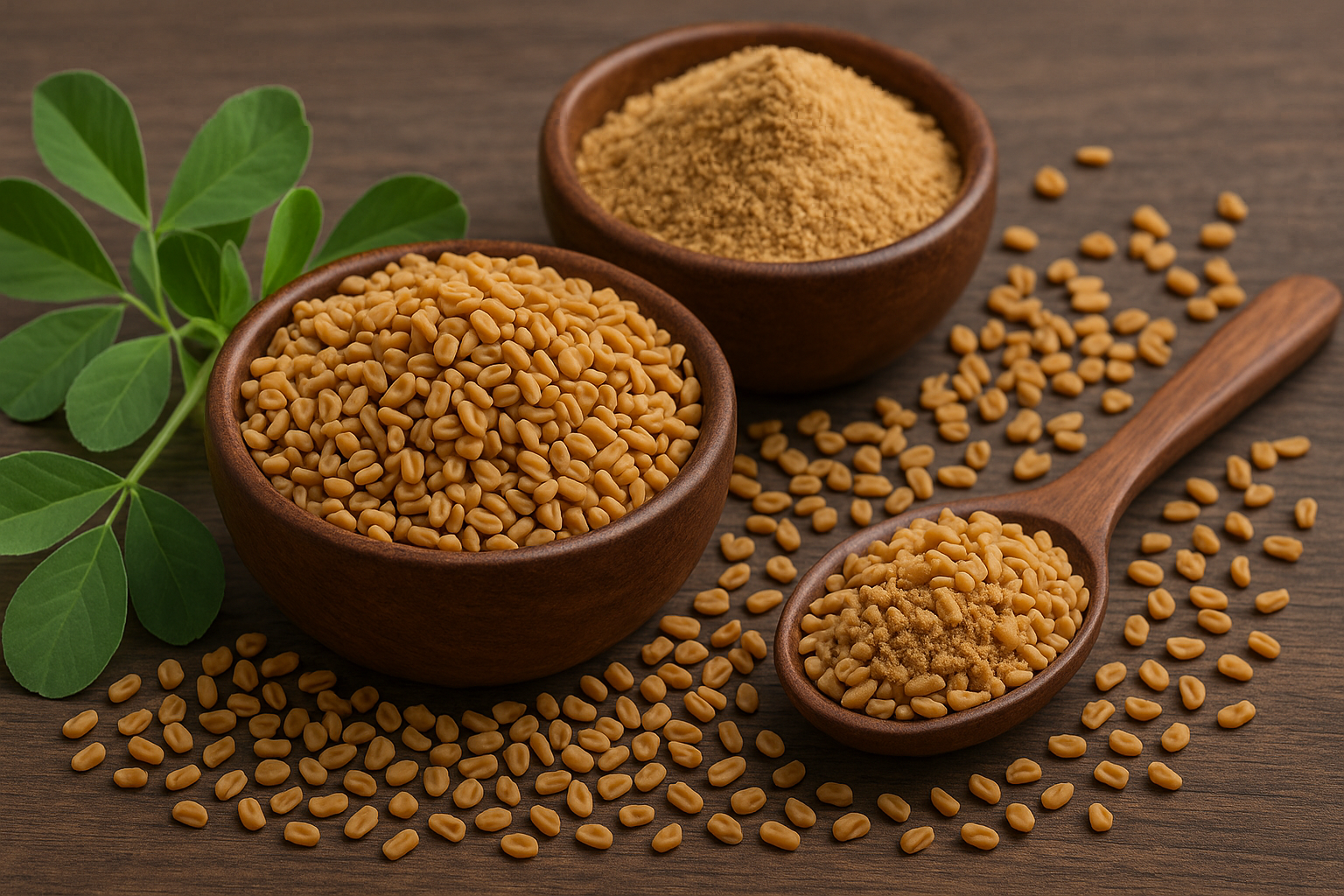Introduction: Understanding Foenegriek in Everyday Life
Foenegriek, better known in English as fenugreek, is one of those ancient plants that quietly bridge the gap between old-world tradition and modern wellness trends. For thousands of years, people across Asia, Africa, and the Mediterranean have valued this humble seed for its unique combination of flavor, texture, and natural health-supporting properties.
In today’s world—where individuals are seeking more natural, plant-based paths to wellness—Foenegriek is attracting fresh attention. Its golden seeds and aromatic leaves appear in everything from herbal teas to energy blends and home cooking.
This article takes a clear and friendly look at Foenegriek: where it comes from, what makes it nutritionally special, how it supports the body, and why it remains a cherished part of culinary and cultural traditions around the world. By the end, you’ll understand why this centuries‑old seed still holds a steady place in the modern kitchen and wellness cabinet alike.
What Exactly Is Foenegriek? Origins, Plant, and Traditional Roots
Foenegriek comes from a small, clover-like plant scientifically known as Trigonella foenum-graecum. It’s native to the Mediterranean region but is now cultivated in many parts of the world, including India, Egypt, and parts of Europe. The plant produces slender green leaves and small pods filled with hard, amber-colored seeds—the part most often used in cooking and herbal preparations.
Historically, Foenegriek has been woven into daily life for millennia. Ancient Egyptians reportedly used it in embalming processes, while Greek and Roman healers recognized its value as a tonic food. In Indian Ayurvedic and Middle Eastern traditional medicine, Foenegriek was prized for supporting digestion and vitality. Its reputation for comforting the body and aiding nourishment helped it travel easily between cultures.
Both the seeds and leaves serve unique purposes. The seeds have a distinctive, slightly bitter taste with a nutty undertone and are often roasted or ground into spice mixes. The leaves, known as “methi” in many South Asian kitchens, are used fresh or dried to enhance dishes with a soft, earthy scent. Together, they showcase the plant’s versatility and enduring appeal.
Nutritional Profile: The Potent Compounds Inside Foenegriek
Behind Foenegriek’s modest appearance lies an impressive nutritional profile. These small seeds are dense with beneficial compounds, including plant proteins, soluble fiber, iron, magnesium, and essential amino acids. They also contain saponins and polyphenols—natural plant chemicals known for their antioxidant properties.
The high fiber content contributes to healthy digestion and helps maintain balanced energy throughout the day. Iron supports circulation and vitality, while magnesium contributes to muscle and nerve function. Together, these nutrients form the quiet foundation of Foenegriek’s reputation as a natural health ally.
Rather than acting as a miracle cure, Foenegriek provides gentle, supportive nutrition that works in harmony with the body—one reason it continues to attract interest from nutritionists and wellness enthusiasts alike.
Health Benefits of Foenegriek: From Digestion to Energy Support
Across research and tradition, Foenegriek has been linked with several potential health benefits. In many cultures, it’s considered a digestive friend—its natural fiber and plant compounds help soothe the stomach and encourage comfortable nutrient absorption. Some modern studies suggest that regular, moderate use of Foenegriek may help maintain balanced blood sugar levels, support metabolism, and promote satiety, which can assist in weight‑management goals.
Its rich nutritional blend may also play a role in sustaining natural energy and endurance. Historically, herbalists have used Foenegriek to support nursing mothers, respiratory health, and general strength. While such traditional uses require balanced interpretation, they highlight the plant’s longstanding role as a gentle, nourishing tonic.
As with any natural plant supplement, moderation matters. Using too much Foenegriek—whether in seed, powder, or extract form—can cause digestive discomfort for some people. For daily use, small culinary amounts or moderate herbal preparations are widely regarded as safe. Individuals dealing with existing conditions, especially related to blood sugar or pregnancy, should seek professional guidance before adding Foenegriek regularly to their routine.
Culinary Uses: Bringing Foenegriek into Your Kitchen
Foenegriek adds an unmistakable depth to food, combining an earthy bitterness with a hint of sweetness. Its aroma changes beautifully once cooked, becoming warm, slightly maple‑like, and comforting. Across diverse cuisines, the spice helps balance bold ingredients—making curries smoother, breads more fragrant, and sauces richer.
In Indian cooking, Foenegriek seeds are a backbone of curry powders and pickles. The leaves, especially dried ones, lend their mellow character to sauces and casseroles. In the Middle East and North Africa, ground Foenegriek appears in spice blends and even in some traditional breads and desserts. A small pinch goes a long way, particularly when the seeds are lightly toasted to unlock their full flavor.
For home cooks discovering Foenegriek for the first time, starting small is key. Try adding a tiny amount to lentil stews, herbal infusions, or roasted vegetables. The seeds can also be soaked overnight to soften their texture and reduce bitterness, making them easier to blend into smoothies or soups.
Foenegriek in Modern Wellness: Supplements, Teas, and Natural Remedies
Beyond the kitchen, Foenegriek has found new life in modern wellness culture. Many people today drink Foenegriek tea or take capsules, tinctures, or powders as part of daily self‑care routines. These modern formats echo the plant’s ancient uses while adapting them to fast, convenient lifestyles.
In sports and fitness, Foenegriek extracts appear in natural performance blends due to their potential to support metabolism and recovery. Meanwhile, herbal enthusiasts appreciate its warming properties and digestive comfort. The appeal lies in its balance—natural but measurable, traditional yet adaptable.
That said, not all products are created equal. When selecting Foenegriek supplements or powders, quality and sourcing are essential. Look for clean ingredient lists, transparent manufacturing standards, and ideally, sustainably grown seeds. Responsible use protects both your body and the communities that cultivate this valuable crop.
Possible Side Effects and Precautions
Although Foenegriek is generally safe in food amounts, it deserves thoughtful use. Its strong natural compounds can sometimes cause mild side effects such as bloating or digestive changes, especially when taken in large doses. Individuals allergic to legumes should be cautious, as Foenegriek belongs to the same plant family.
Some studies suggest Foenegriek may influence blood sugar and hormonal activity. Therefore, people managing diabetes, hormone-related conditions, or taking medications should speak with a healthcare professional before regular supplementation. Pregnant individuals are also advised to consult a doctor before consuming concentrated Foenegriek products.
Used wisely and in moderation, Foenegriek is an ally rather than a risk—another reason it fits naturally within a balanced, informed lifestyle.
Environmental and Cultural Perspectives on Foenegriek
The story of Foenegriek is also a story of global connection. Grown in diverse climates, from India’s dry regions to North Africa’s fertile plains, it supports small farmers who often maintain seed-saving traditions dating back generations. Sustainable cultivation methods—such as crop rotation and minimal chemical use—help preserve soil health and local biodiversity.
Culturally, Foenegriek has shaped culinary identities. In Indian households, its aroma instantly signals home cooking; in Ethiopian cuisine, it enriches the spice blend berbere that gives dishes their iconic warmth. The growing worldwide demand for natural products challenges communities to find balance between honoring heritage and meeting modern market needs. Supporting ethically sourced Foenegriek ensures that this balance continues into the future.
Conclusion: The Enduring Value of Foenegriek in a Balanced Lifestyle
From ancient temples to modern wellness shelves, Foenegriek has quietly thrived as a plant of nourishment, comfort, and versatility. Its story proves that simplicity and tradition often hold the keys to lasting well‑being. Whether sprinkled into a stew, brewed in a cup of tea, or used as a gentle health supplement, Foenegriek shows how nature’s small gifts can contribute meaningfully to daily life.
In a world overflowing with complex choices, Foenegriek reminds us that genuine balance doesn’t require perfection—just awareness and respect for what we consume. With its blend of flavor, history, and natural goodness, this enduring seed earns its place in both the kitchen and the heart of healthy living.
My name is Mustafa, and I have been blogging for over 5 years. I am passionate about sharing complete, accurate, and helpful information with my readers. Along with managing content on The Matcha Read, I also contribute blog posts to premium websites. My goal is to provide valuable insights in a clear and easy-to-understand way, so every reader walks away with useful knowledge.










